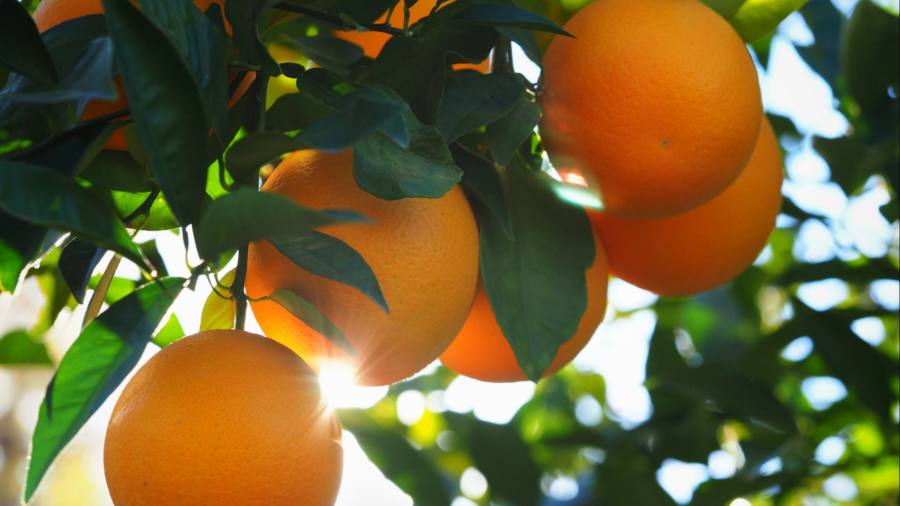Receive free Agricultural commodities updates
We’ll send you a myFT Daily Digest email rounding up the latest Agricultural commodities news every morning.
Orange juice futures have surged to fresh all time-highs as a series of hurricanes and the spread of an incurable disease have devastated thousands of acres of citrus crops in the US.
Overall orange juice production in the US is the lowest in “over 100 years”, said Matthew Joyner, chief executive of Florida Citrus Mutual, a trade association representing almost 2,000 growers. “Just over 20 years ago we were producing 240mn boxes, now we’re finishing this season at just under 18mn.”
Dwindling supplies mean the Intercontinental Exchange’s frozen concentrated orange juice (FCOJ) futures benchmark now trades at $3.00 a pound, up from $1.76 this time last year. Where FCOJ futures prices lead, US retail prices eventually follow.
“It’s not the most fluid, liquid market in the world, but boy does it move when it wants to,” said Jack Scoville, a broker at Price Futures Group in Chicago, adding that prices could yet touch $3.50 a pound. “It’s been a very impressive rally. In the past prices have gone up and people have popped more pills and vitamin supplements that compete with juice, but that hasn’t happened this year.”
Since it was introduced in 1966, the FCOJ contract — orders for which are snapped up by dastardly commodity brokers in the Hollywood movie comedy Trading Places — has allowed industry players to hedge against market volatility by buying and selling individual orders of up to 15,000 pounds of juice solids stored in drums or tanks at a predetermined date and price. The Minneapolis Grain Exchange launched an apple juice equivalent in 2012 “but it never attracted the trading interest” and closed down six years later, Scoville said.
Orange juice now faces a squeeze of its own. More than 90 per cent of US supply comes from Florida, which was hit by a particularly destructive hurricane at the start of the harvest last September and a cold snap three months later.
Citrus greening — a disease spread by sap-sucking psyllid insects that renders the fruit from infected trees “green, misshapen and bitter”, according to the US Department of Agriculture — has eroded orange juice production since it was first detected in the US in 2005. The disease has also become increasingly prevalent across Brazil, the world’s largest supplier.
“We’re 100 per cent infected apart from new trees we put in the ground, and they get infected within a year,” Joyner said, though new “therapies” that boost trees’ resilience appear to be “moving the needle in terms of production”.
“The storms couldn’t have come at a worse time but we have the ability to turn this industry around,” Joyner added. In the meantime, exports to Canada and the EU — Florida’s primary non-US markets — have all but dried up. “We have our hands full supplying the domestic market at the moment,” he said.
Some growers have already had enough. “Farmers are inoculating trees with I do not know what, but it’s not working,” said one soon-to-retire Floridian orange grove owner who asked not to be named. “Plus a lot of the groves are gone. That’s because of green disease and people wanting money. They can sell their land for more than they can get growing oranges.”
Read the full article here



